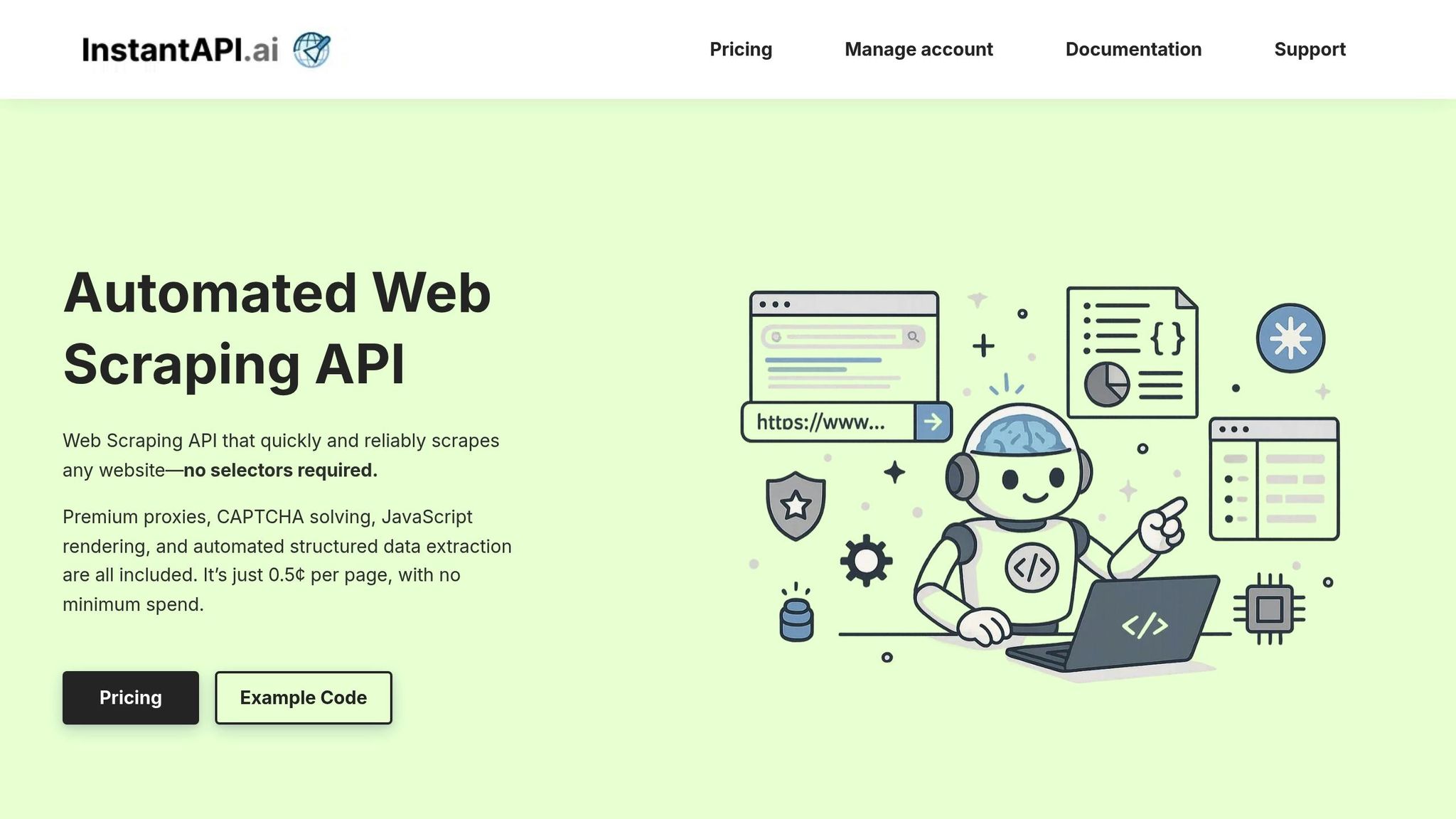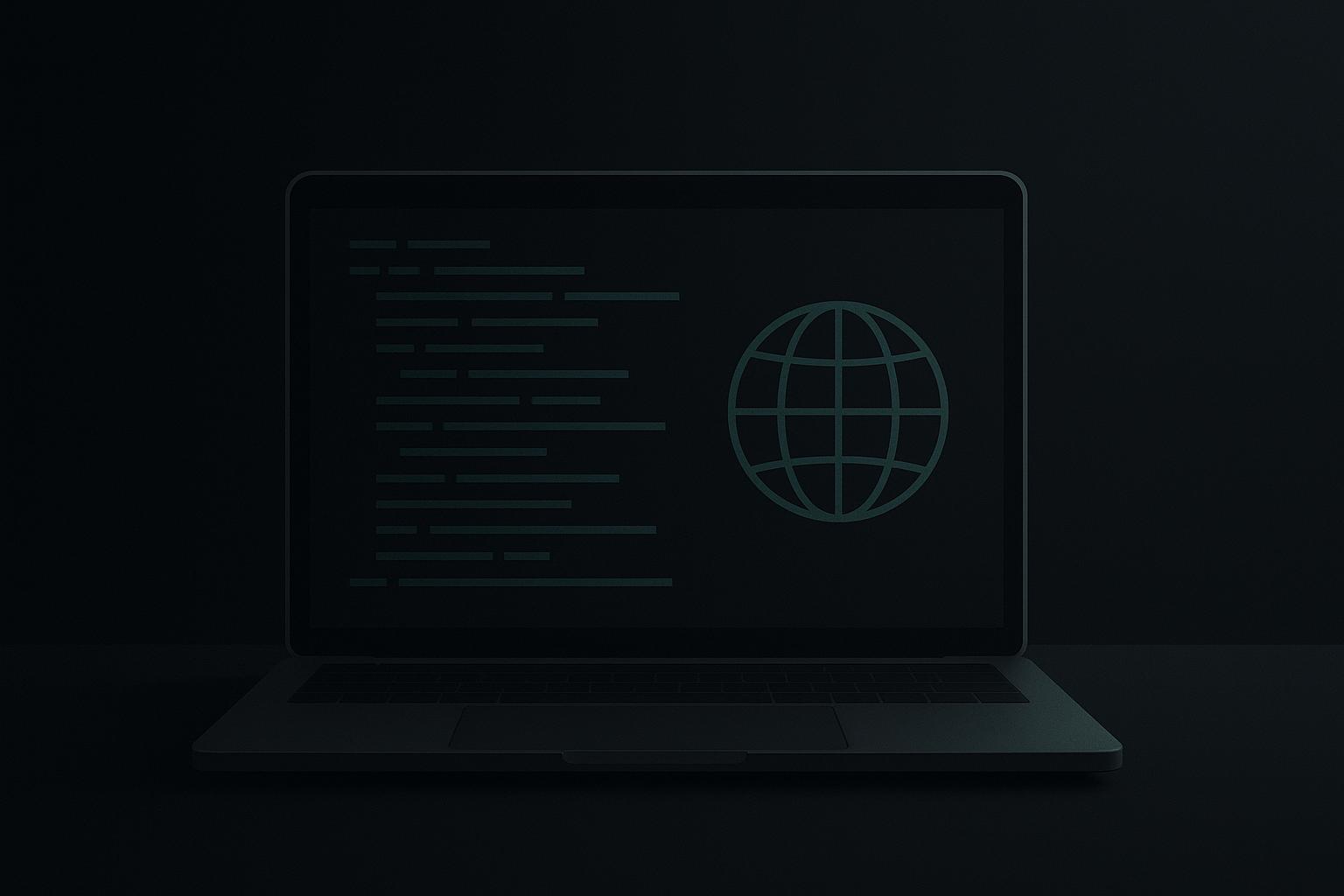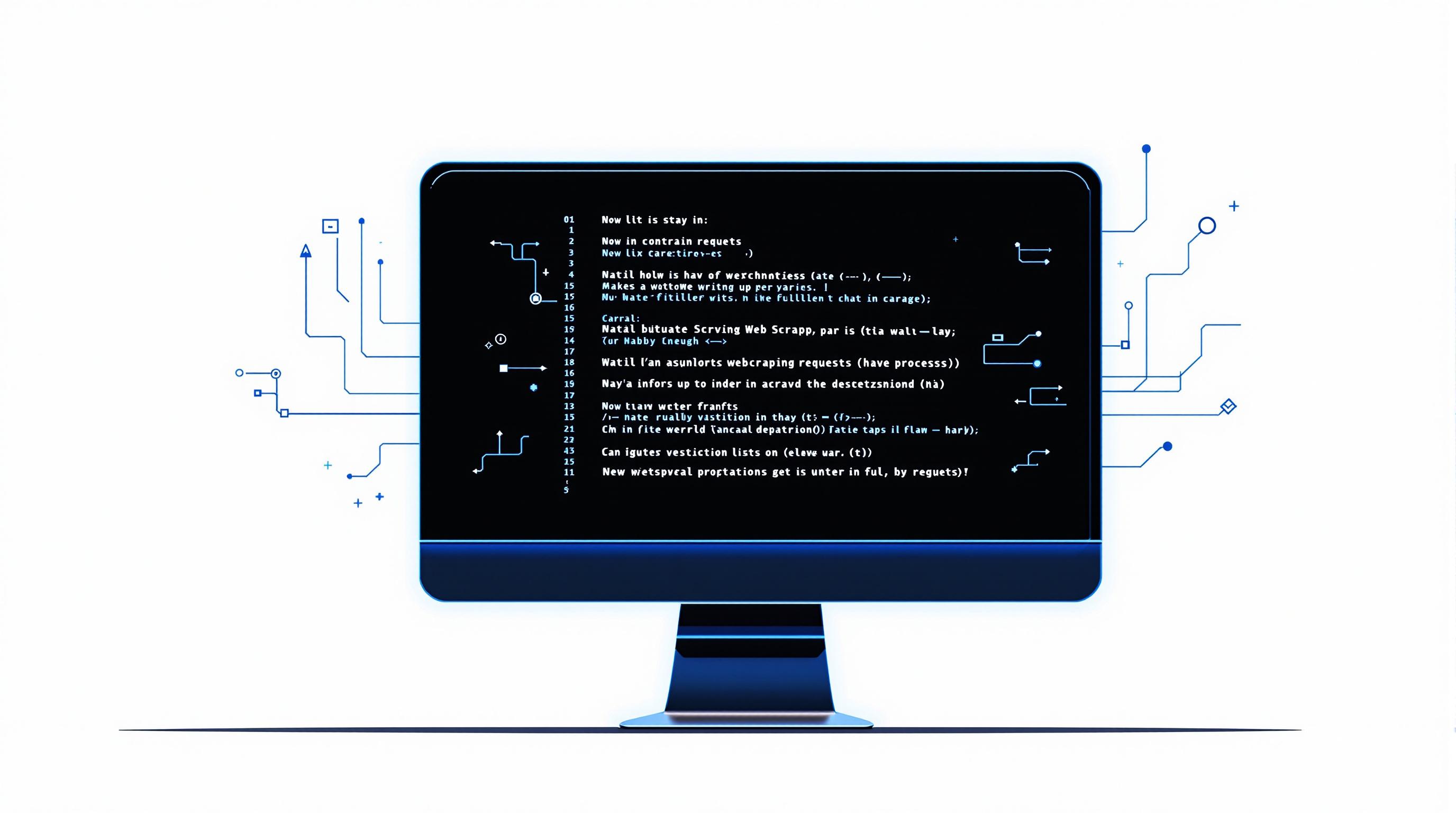Web scraping helps fashion brands stay ahead by collecting real-time data from websites, like e-commerce platforms, social media, and blogs. This data is used to track trends, monitor competitors, and understand customer preferences. Key benefits include:
- Spotting Trends: Identify popular colors, designs, and styles before they go mainstream.
- Understanding Customers: Analyze reviews and social media for feedback and sentiment.
- Tracking Competitors: Monitor pricing, inventory, and promotions.
Tools like InstantAPI.ai simplify this process with features like CAPTCHA-solving, proxy management, and structured data output. By integrating this data into their operations, brands make faster, smarter decisions, adjusting inventory, pricing, and marketing strategies in real-time.
Web Scraping Fashion Website (Hidden API) | Web Crawling ...
Using Web Scraping for Fashion Analysis
Brands are turning to web scraping to gather detailed market insights and make quicker, data-driven decisions. This automated approach to data collection helps businesses stay ahead in a fast-moving industry.
Spotting New Fashion Trends
Web scraping allows brands to keep an eye on e-commerce platforms, social media, marketplaces, and review sites. This helps identify trends as they emerge, long before they become mainstream.
Here are some key indicators to watch:
- Changes in popular color palettes across collections
- New silhouettes and design elements gaining traction
- Shifts in price points across various categories
- Social media buzz around specific styles
- Fast-moving inventory for trending items
By keeping tabs on these factors, brands can detect smaller trends that may signal larger market changes.
Understanding Customer Preferences
Scraping customer reviews, ratings, and social media discussions provides valuable insight into what shoppers think and want. Using AI tools for sentiment analysis, brands can identify reactions early and make adjustments before committing to full-scale production.
Keeping Tabs on Competitors
Web scraping also helps track what competitors are doing, from pricing strategies to inventory and promotions. This data can guide smarter decisions about pricing, stock levels, and marketing.
Important metrics to monitor include:
- Pricing updates, stock availability, and new product launches
- Promotional campaigns and seasonal tactics
- Both online and offline strategies
To stay competitive, consider benchmarking weekly and keeping an eye on seasonal shifts. This ensures you're always prepared to respond effectively to market changes.
Web Scraping Tools for Fashion Data
Once you've pinpointed trends and competitor strategies, the next step is gathering data on a large scale. Here’s how tools like InstantAPI.ai can help.
Key Features of InstantAPI.ai

InstantAPI.ai offers a range of features specifically designed for fashion data extraction:
- Headless-browser rendering for handling dynamic websites
- CAPTCHA-solving capabilities to bypass site restrictions
- Proxy management with rotating IPs for secure and efficient scraping
- Structured JSON output for easy data handling
- Customizable data outputs using mock JSON schemas
"InstantAPI.ai's API is fast and lets us focus on core features", says Juan from Scalista GmbH.
Seamless Data Integration
To make the most of the data you collect, integration is key:
- API Integration & Schema Mapping: Link the API to your analytics or inventory systems. Define fields like product name, price, size, and color to ensure the data aligns with your specific needs.
- Automated Data Collection: Set up scheduled extraction jobs to run simultaneously. With a pay-per-use model, you can keep your insights updated in real-time without overspending.
Choosing Reliable Data Sources
Expand your reach by targeting e-commerce platforms, fashion blogs, social media channels, and review sites. Use geotargeting across 195+ countries and leverage access to 65 million rotating IPs to gather data globally.
Next, explore how to use this data effectively to guide your strategic decisions in the fashion industry.
sbb-itb-f2fbbd7
Making Fashion Data Work
Steps to Integrate Fashion Data
After collecting data from various fashion websites, the next step is integration. Here's a typical process:
- Examine the data: Review the collected data for accuracy and relevance.
- Cleanse the data: Remove duplicates, errors, and inconsistencies.
- Transform and model: Format the data to fit operational needs and create usable models.
- Load into a central repository: Store the processed data in a unified location.
For example, H&M uses real-time analytics on consolidated data to adjust inventory and production based on live sales trends.
Once all the data is in one place, brands can seamlessly incorporate it into their operations.
Leveraging Data for Better Decisions
Fashion brands are using data to make informed business decisions:
- Nike applies machine learning to sales, customer behavior, and external factors to predict demand, optimize inventory, and reduce waste.
- Stitch Fix uses customer feedback and preferences to customize shipments.
- Sephora integrates in-store and online interactions to deliver personalized recommendations.
These examples highlight how data integration leads to actionable insights and measurable results.
Ensuring Data Quality
For decisions to be reliable, the data must be accurate and trustworthy. Maintaining quality involves ongoing efforts:
- Validation checks: Schedule regular reviews to ensure data accuracy.
- Cross-referencing: Compare with multiple sources to confirm consistency.
- Freshness monitoring: Ensure the data remains up-to-date.
Tommy Hilfiger’s "Reimagine Retail" initiative with IBM demonstrates the importance of quality. They used strict controls and AI to analyze social media and runway images, leading to precise trend predictions.
By prioritizing data quality, you’ll be better equipped to handle common challenges in data scraping and analysis.
Source: PromptCloud, "Unlocking New Opportunities in the Fashion Industry with Data Analysis"
Solving Fashion Web Scraping Problems
Common Challenges in Web Scraping
Even with well-designed systems, scraping data for fashion brands can hit a few roadblocks:
- Frequent layout changes that disrupt parsers
- Anti-scraping measures like CAPTCHAs, IP bans, or honeypots
- Adhering to regulations like GDPR and CCPA/CPRA
Tips for Reliable Web Scraping
To keep your data extraction process smooth and compliant, follow these strategies:
- Check each website's Terms of Service and robots.txt file before scraping
- Stick to a reasonable crawl rate, such as one request every 10–15 seconds
- Use a clear user-agent string to identify your scraper
- Rotate proxies or use residential ones to avoid IP bans
- Rely on flexible parsers or headless browsers to handle HTML changes
- Add CAPTCHA-solving tools or manual review workflows when necessary
- Watch for unusual CSS attributes that could signal honeypot traps
Ensuring High-Quality Data
To maintain strong data pipelines, scale storage as needed, enforce schema validations, and set up alerts for missing or incorrect data.
Web Scraping for Fashion Success
Key Insights
Web scraping has reshaped how fashion brands analyze trends and make decisions. With AI-driven tools offering over 99.99% accuracy, brands can access real-time insights from around the globe for as little as $0.005 per page.
The Future of Fashion Data
AI is poised to take scraped data to the next level by instantly turning raw information into actionable insights. These systems will seamlessly integrate with existing business intelligence tools, tailoring data to meet specific needs on the fly.
This blend of AI-powered web scraping and advanced analytics is redefining how fashion brands stay ahead of market trends. Even smaller brands now have the tools to compete on a global scale, leveraging data to make smarter, faster decisions.
[1] InstantAPI.ai achieves a 99.99%+ success rate in web scraping.
[2] Features include global geotargeting, proxy management, JavaScript rendering, CAPTCHA bypass, and access to 65 million rotating IPs in 195 countries.
[3] InstantAPI.ai offers a flat rate of $0.005 per scraped page.


